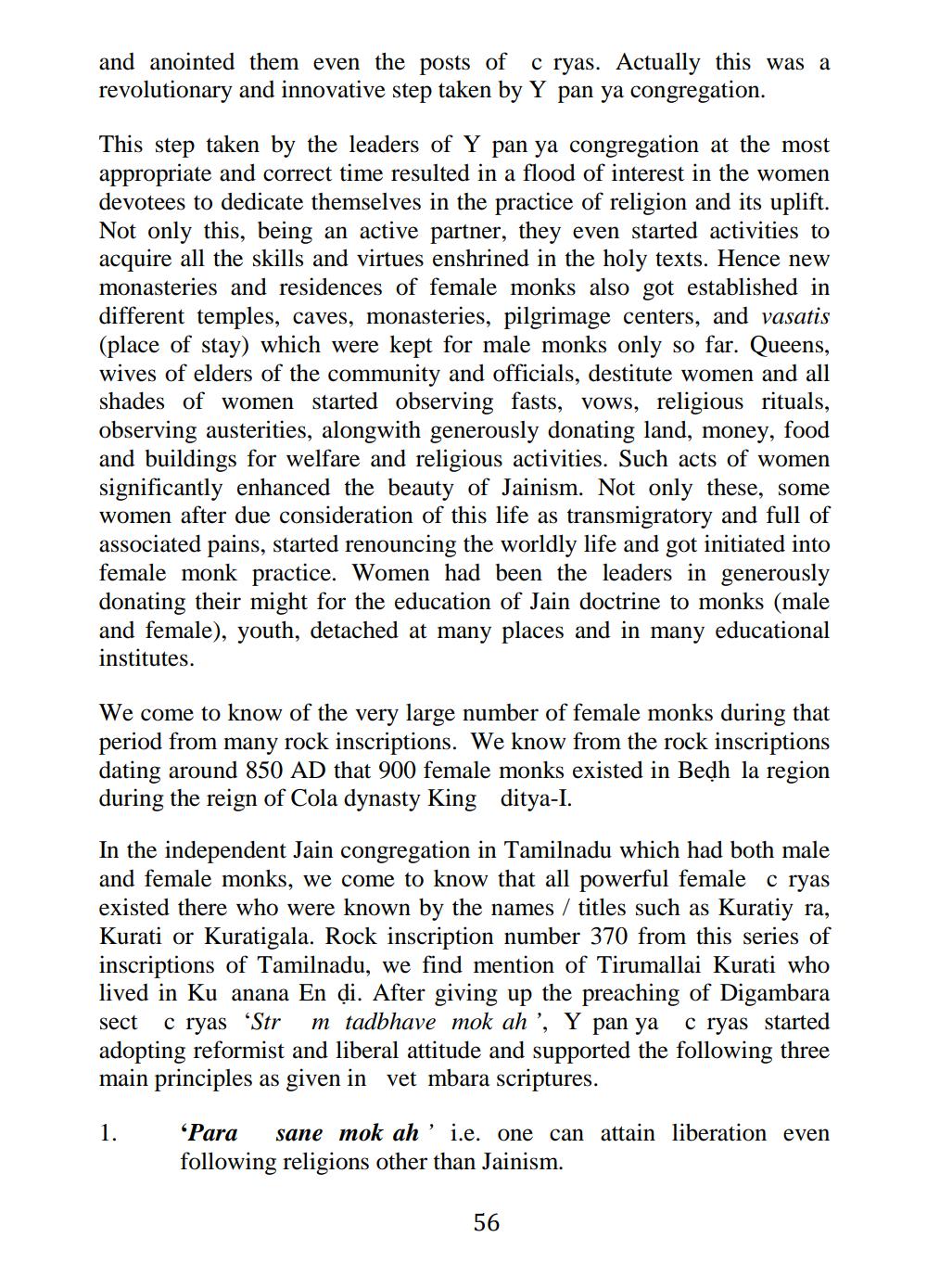________________
and anointed them even the posts of c ryas. Actually this was a revolutionary and innovative step taken by Y pan ya congregation.
This step taken by the leaders of Y pan ya congregation at the most appropriate and correct time resulted in a flood of interest in the women devotees to dedicate themselves in the practice of religion and its uplift. Not only this, being an active partner, they even started activities to acquire all the skills and virtues enshrined in the holy texts. Hence new monasteries and residences of female monks also got established in different temples, caves, monasteries, pilgrimage centers, and vasatis (place of stay) which were kept for male monks only so far. Queens, wives of elders of the community and officials, destitute women and all shades of women started observing fasts, vows, religious rituals, observing austerities, alongwith generously donating land, money, food and buildings for welfare and religious activities. Such acts of women significantly enhanced the beauty of Jainism. Not only these, some women after due consideration of this life as transmigratory and full of associated pains, started renouncing the worldly life and got initiated into female monk practice. Women had been the leaders in generously donating their might for the education of Jain doctrine to monks (male and female), youth, detached at many places and in many educational institutes.
We come to know of the very large number of female monks during that period from many rock inscriptions. We know from the rock inscriptions dating around 850 AD that 900 female monks existed in Beḍh la region during the reign of Cola dynasty King
ditya-I.
In the independent Jain congregation in Tamilnadu which had both male and female monks, we come to know that all powerful female c ryas existed there who were known by the names / titles such as Kuratiy ra, Kurati or Kuratigala. Rock inscription number 370 from this series of inscriptions of Tamilnadu, we find mention of Tirumallai Kurati who lived in Ku anana En ḍi. After giving up the preaching of Digambara sect c ryas 'Str m tadbhave mok ah', Y pan ya c ryas started adopting reformist and liberal attitude and supported the following three main principles as given in vet mbara scriptures.
1.
'Para sane mok ah' i.e. one can attain liberation even following religions other than Jainism.
56




